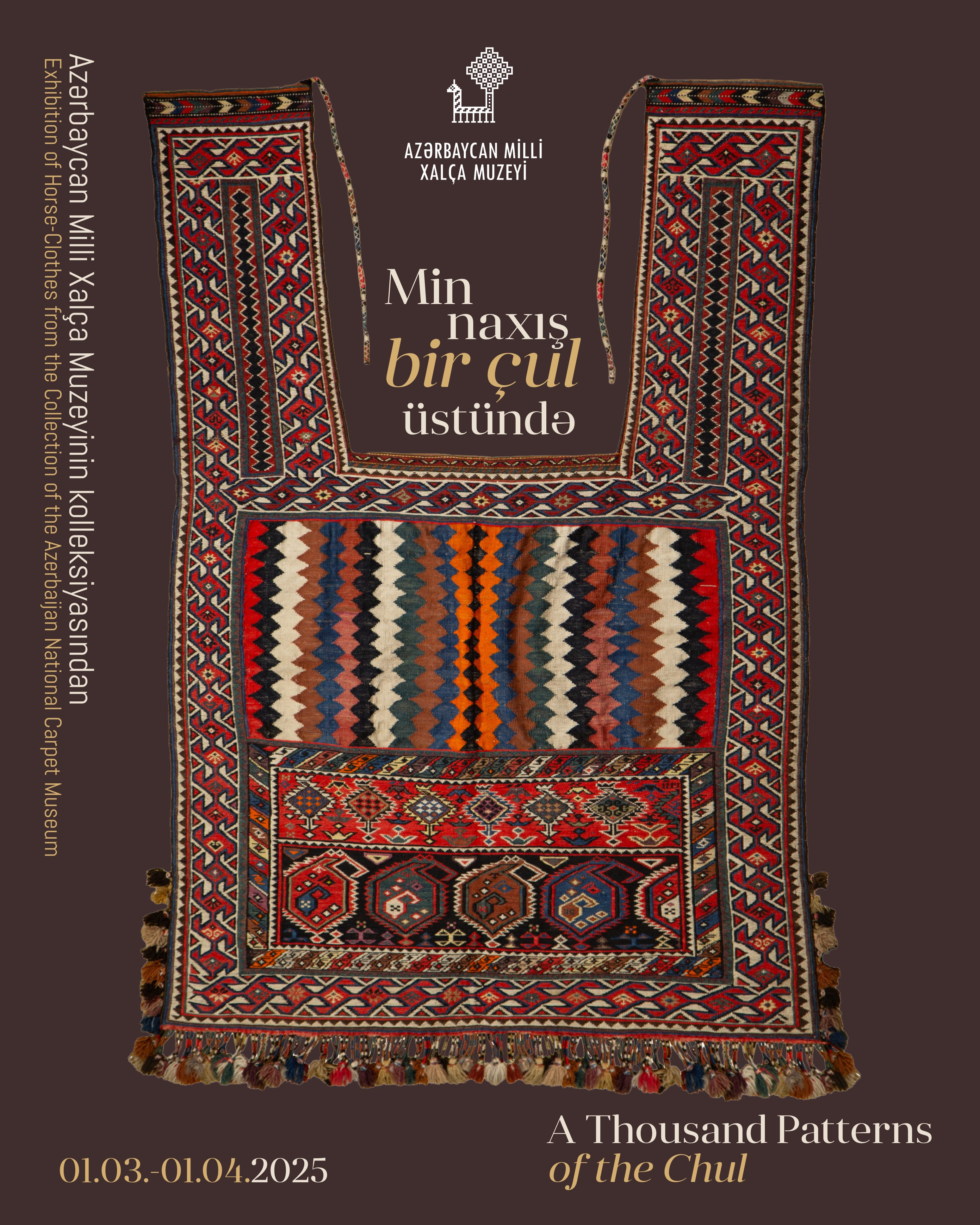Chul
Our next object from the museum's Carpet Products collection is CHUL. Let's learn more about it!
Chul is a decorative cover that was used to protect and decorate the backs of different beasts of burden (horses, camels, donkeys, and oxen). It was mainly made with pile and flat-weaving techniques and sometimes with embroidery techniques, such as gulabatin (goldwork embroidery), takalduz (chain stitch embroidery), and julma (loop embroidery).
In cold weather, a horse’s back was covered with a chul that was discarded when the weather became warmer. During the Middle Ages, a chul was made of wool, colored silk, sometimes gold and silver threads for the horses of rulers and court noblemen. The majority of its ornaments are characteristic of each particular region. The sacred signs, and ornithomorphic images of a 19th-century chul from Absheron, which was made using the technique for weaving a zili carpet, have meanings that illustrate universal values filled with deep content.
Chul. Baku, Azerbaijan. 19th century. Warp, weft - wool; patterning thread - wool, cotton. Interweaving, wrapping. Inv. No. 2029








